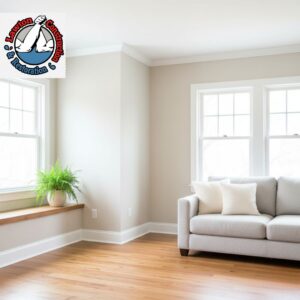Mold removal is essential for every homeowner who wants to maintain a safe, healthy, and comfortable living environment. Mold thrives in damp areas such as bathrooms, basements, and kitchens, and if left unchecked, it can damage walls, floors, and furniture while causing health issues like allergies or respiratory problems. In this guide, we will cover seven proven strategies for effective mold removal and prevention. For professional assistance, you can visit Mold Removal for expert services.
Understanding Mold and Its Risks
Mold grows in environments with excess moisture, poor ventilation, and hidden water leaks. It feeds on organic materials, including wood, drywall, and fabric. Common signs include musty odors, visible black or green spots, peeling paint, or water stains. Identifying these risks early is crucial for effective mold removal and preventing long-term damage.
For more information on how mold affects health, check the CDC mold guide or the EPA mold resource.
Strategy 1: Inspect Your Home Regularly
Regular inspections help you catch mold before it spreads. Focus on high-risk areas such as bathrooms, kitchens, laundry rooms, and basements. Look for visible discoloration, water stains, or condensation on pipes and walls. Early detection allows for quick intervention and reduces the likelihood of structural damage.
Strategy 2: Fix Leaks and Moisture Problems Immediately
Any leaks in plumbing, roofing, or walls should be addressed without delay. Even small amounts of water can create the perfect conditions for mold growth. Regularly check under sinks, behind appliances, and around windows for hidden leaks. Prompt repairs prevent mold from establishing itself in your home.
Strategy 3: Improve Ventilation
Proper airflow is crucial to keep your home dry and mold free. Use exhaust fans in bathrooms and kitchens, open windows when weather permits, and ensure vents and ducts are clean. In areas prone to high humidity, such as basements, a dehumidifier can help maintain indoor moisture levels below 50 percent, reducing the risk of mold growth.
Strategy 4: Clean and Dry Wet Areas Quickly
Mold can begin growing within 24 to 48 hours after a surface becomes wet. Always dry carpets, rugs, furniture, and floors promptly after spills or leaks. Use fans or professional drying equipment to ensure areas are completely dry. For larger or stubborn infestations, professional services like Mold Removal provide thorough remediation to ensure safety and effectiveness.
Strategy 5: Use Mold Resistant Materials
When renovating or repairing your home, consider using mold resistant materials such as treated drywall, moisture-resistant paint, and mold-resistant insulation. These products help prevent mold from growing, especially in bathrooms, kitchens, and basements where moisture is common.
Strategy 6: Maintain Gutters and Outdoor Drainage
Proper water management around your home prevents moisture from seeping into foundations or basements. Clean gutters and downspouts regularly, and make sure the ground slopes away from your home. Keeping outdoor drainage in check is as important as controlling indoor moisture for mold prevention.
Strategy 7: Schedule Professional Mold Inspections
Even with preventive measures, mold can hide in hard-to-see areas. Professional inspections identify hidden mold, assess structural damage, and provide a comprehensive remediation plan. Experts from Mold Removal have the tools and expertise to safely remove mold and prevent it from returning.
Conclusion
Mold removal and prevention are essential for protecting your home, health, and investment. By following these seven strategies regular inspections, fixing leaks, improving ventilation, cleaning wet areas, using mold resistant materials, maintaining drainage, and scheduling professional inspections you can keep your home mold free.
For homeowners looking for reliable professional solutions, Mold Removal offers expert services tailored to Northern California and Nevada homes. Taking action today ensures your home remains safe, clean, and comfortable all year long.



